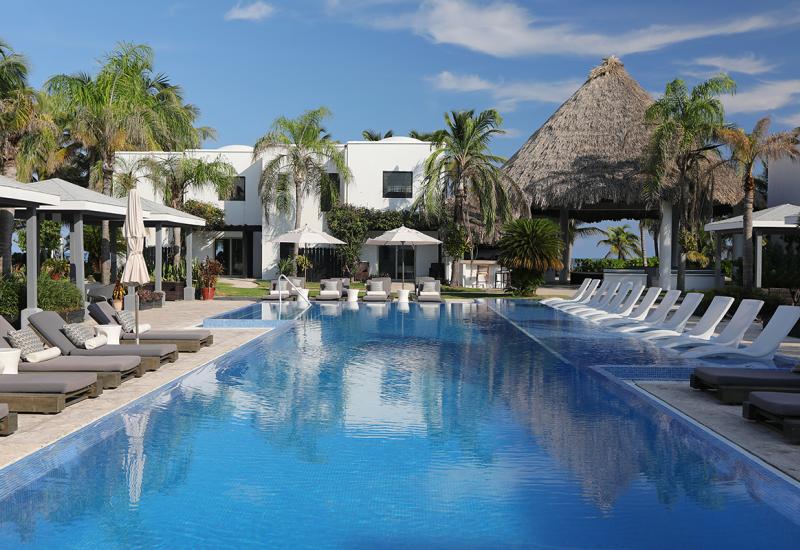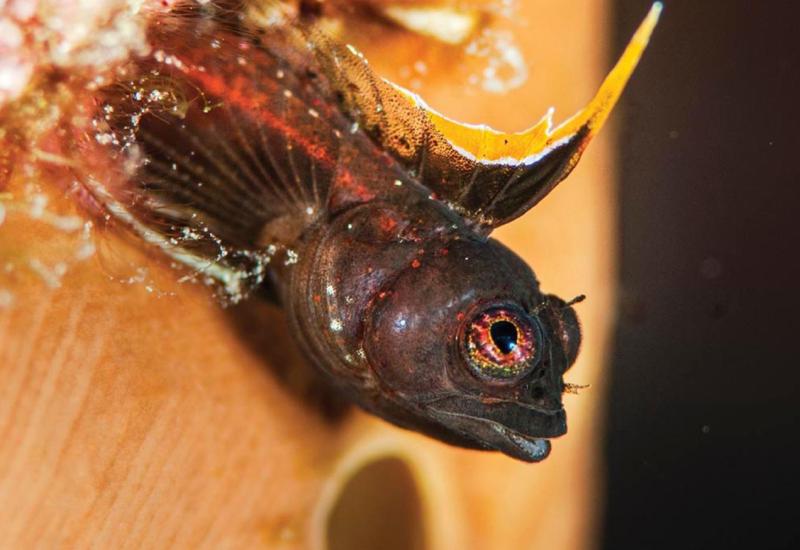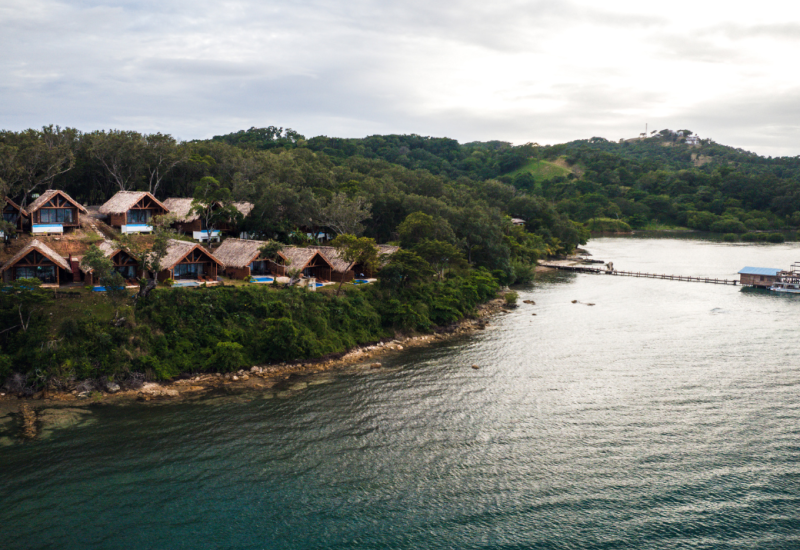The Wild West Of Puerto Rico
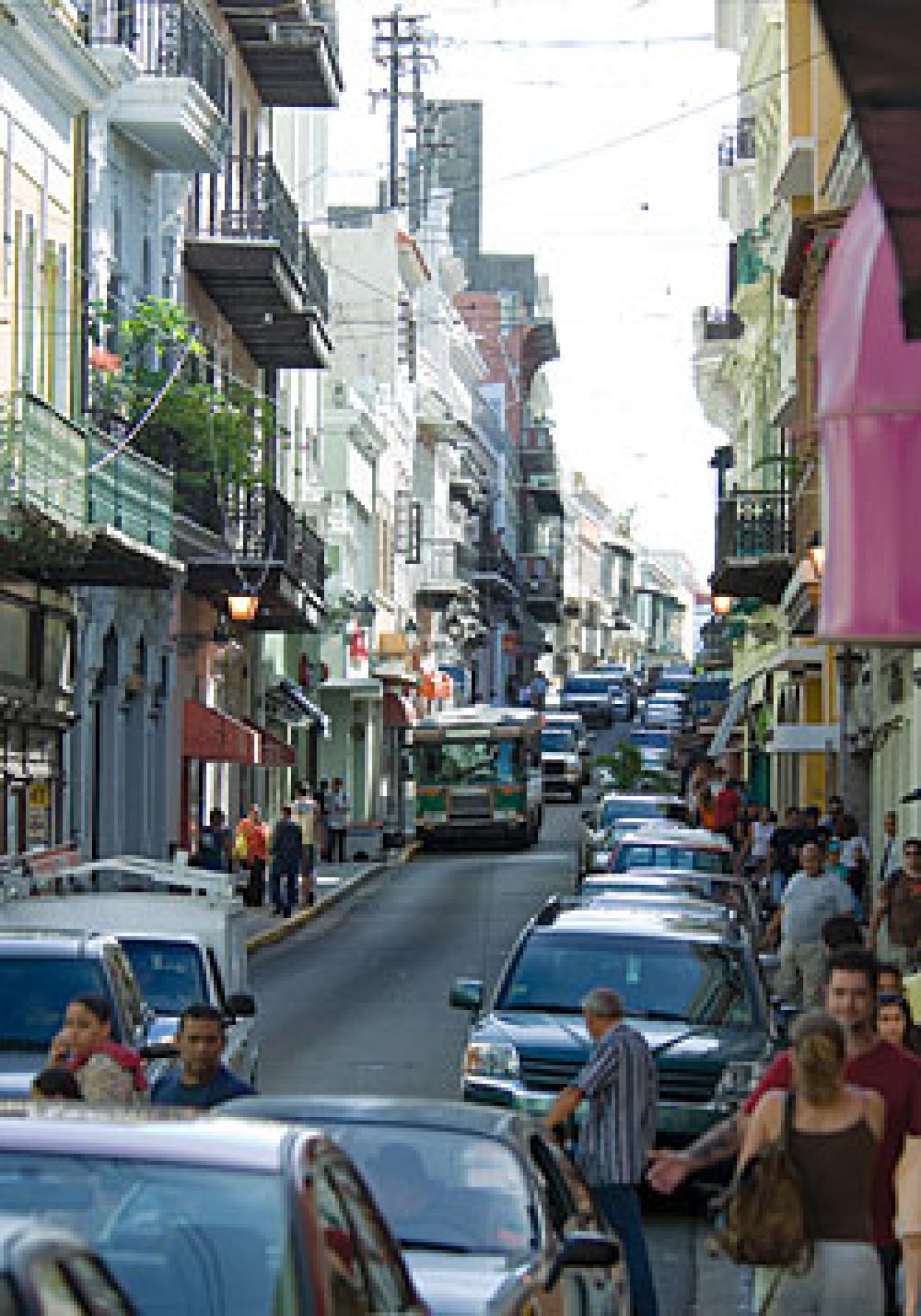
Steve Simonsen
"We were with her for about an hour. Just as I climbed on the back deck, I swear to you, man, this whale shark picked her nose up out of the water and rests her chin on the dive platform. She just wasn't done playing with us. I slid back in and scratched her head, swam with her for another 15 minutes or so, and then she swam off. This animal had a spirit--I'm telling you. It was one of the most amazing connections I've ever made with another living thing."
Greg Carson is a man of many tales, most of them tall, but all of them true. Dark and handsome with a charismatic storytelling gift, he weaves tales of diving adventures as easily as he handles his 12-passenger dive catamaran. We're skimming across an unusually flat ocean after my first day of diving at remote Desecheo Island. So far, every amazing thing Carson, proprietor of Taino Divers in Rincon, and photographer Steve Simonsen promised me about the wild, deep waters of western Puerto Rico has turned out to be God's honest truth. Still, the whale shark story sounds ... exaggerated? So did the stories about the tuna and that 14-foot hammerhead. But all doubt is erased when minutes later the boat is surrounded by a leaping school of blunt-nose pygmy sperm whales.
"I have no idea where these guys came from," Carson says, admiring the animals off the port side and keeping the boat steady as we go. "January through March we get humpbacks all the time, and we get spinners, spotted, bottlenose, all kinds of dolphins riding the bow the whole year. But this is new. This is Dessy, though, man. It's so unpredictable out here. Anything can show up."
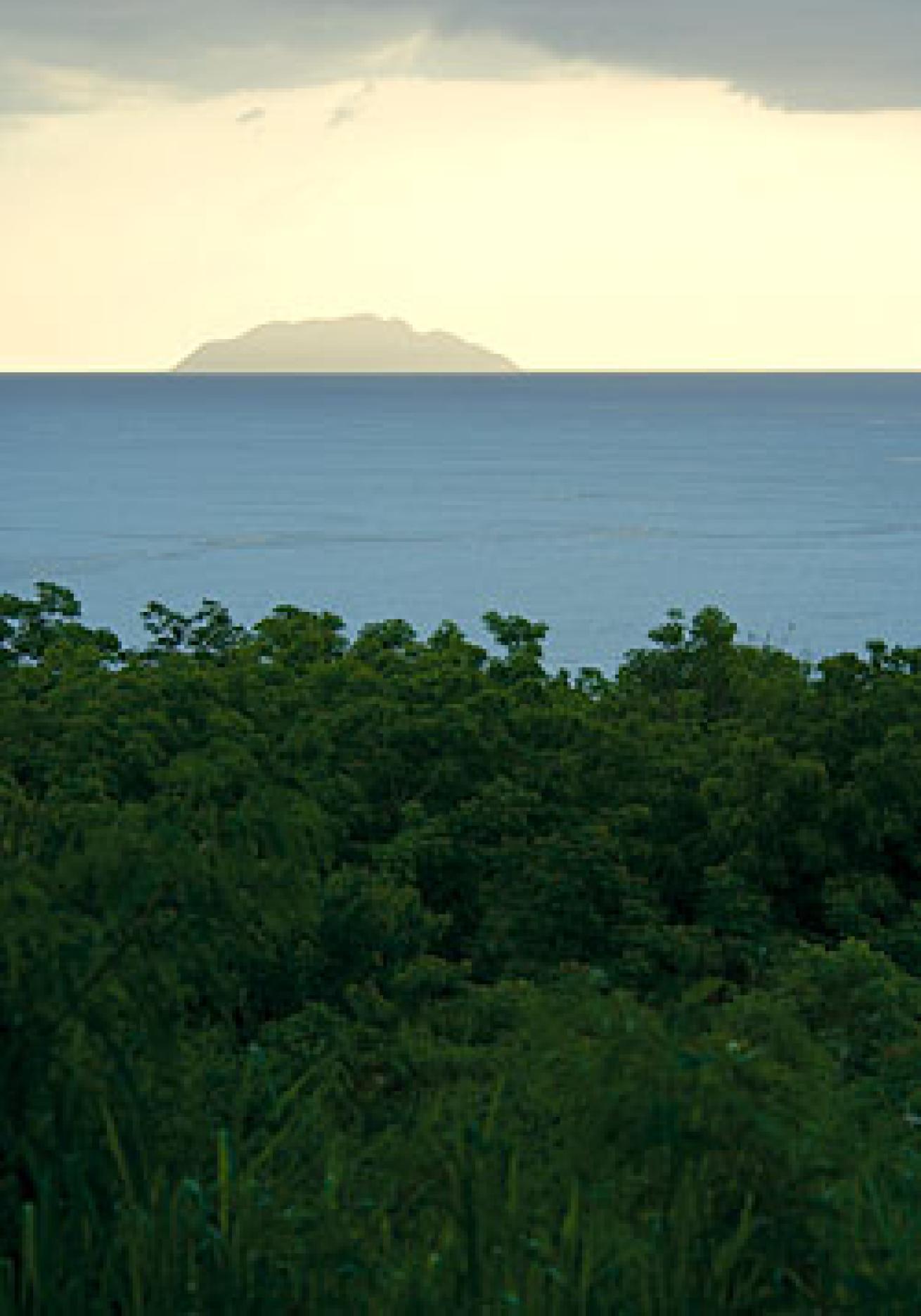
Steve Simonsen
Desecheo: A Journey to Candyland
I'll be honest with you--before this trip I thought of Puerto Rico as a convenient place to change planes en route to other Caribbean destinations. I thought of colonial history and seriously hot salsa nights in Old San Juan, but I didn't think of great diving. Paint me the color of wrong, and lay on several coats. Now I think about remote islands like Desecheo and Mona, and about deep vertical reefs on the Parguera Wall. I think of infinite coral gardens and can openers. (We'll get to that last one later. I promise.)
Located 12 miles due west of the sleepy beach town of Rincon, Desecheo is a remote limestone island that sits astride a 30,000-foot-deep ocean trench. On a clear day you can see the outline of the island from shore, and it's a short 35-minute boat ride to more than 24 named dive sites. Swept by deep ocean currents, the sponge-covered reefs seem unusually colorful and vibrant, and the marine life ranges from tiny tropicals to pelagic hunters.
My first taste of what Dessy has to offer is Candyland, a field of limestone boulders as far as you can see. Each rock is encrusted with coral, sponges and swarmed by schools of grunts and yellowtail snappers. It's a circus of color and life; coneys stake their real estate on different coral heads and schools of horse-eye jacks move slowly but intently through the rich blue. Yellow Reef is a honeycomb of caves and deeply cut ravines swarming with fish. The boulders give way to a rocky slope that bottoms out at about 90 feet, where barracuda, permit, massive southern stingrays and even a turtle or two comb the rocky/sandy bottom for their next meal. At Dos Pesones, two triangular pieces of rock jut out above the water, barely hinting at the massive slopes that lie just underneath. This is wide-open water, and from the tip of the pinnacles to where it levels off at five atmospheres, there are very defined, very different strata of life. Nudibranchs, anemones overrun with shrimp, blue tangs, scores of creole wrasse, nurse sharks. Even the tamer sites at Desecheo have the power to awe. Take Las Cuevas, Spanish for The Caves. There's a lot of action on the reef in 40 feet of water, but the best part of this dive is found in the dozen or so namesake caverns hollowed out of the island's base. It's like a marine funhouse; each cave seems to be populated with a different species of fish. Glassy sweepers in one, French angels in another, hundreds of squirrelfish in the next; the only recurring theme is the rich orange soft coral that covers the arched walls of limestone.
No one is in a hurry to leave, and when I finally hand my housing up to the crew and climb out of the water, Carson's there with a smile and a hang-loose sign.
"Good stuff, right dude?" he says. "How about those caves? They're always a crowd-pleaser."
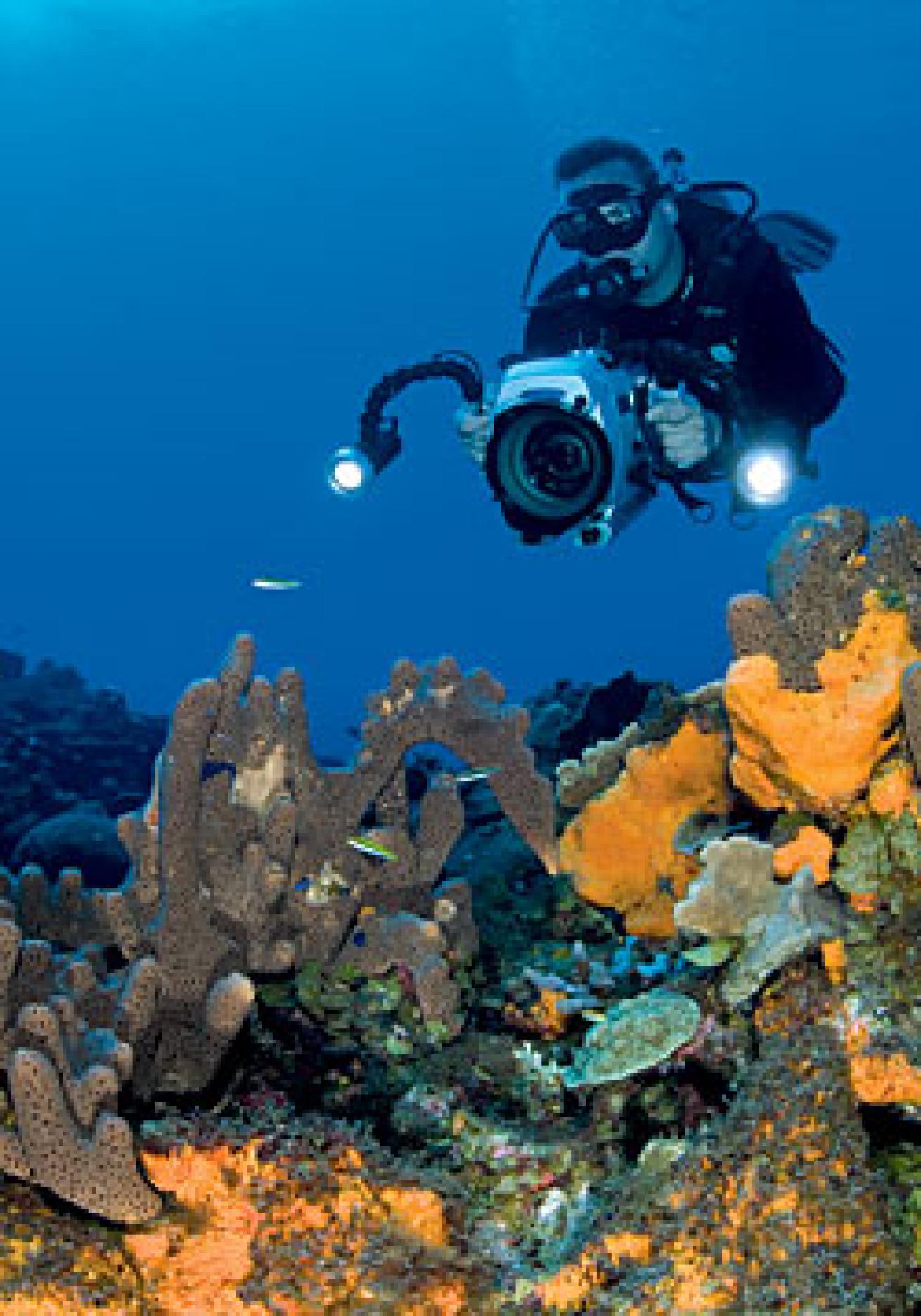
Parguera Wall: Get Vertical
The other surprise discovery on this trip is the Cayman-esque wall diving. Running for 20 miles along the southwest corner of the island is Parguera Wall, the reef-encrusted edge of the continental shelf. The wall comes the closest to the shore at the fishing village of La Parguera, making it a convenient dive port. Our guide for this part of the trip is Angel Rovira of Parguera Divers, who treasures his wild corner of western Puerto Rico every bit as much as Carson does Desecheo.
Angel explains that the wall sites start in 50 to 60 feet of water and drop down to well beyond sport-diving depths. At Black Wall, the wall stairsteps down with a shelf at 130, another at 250 then the next stop is 1,000 feet. The site takes its name from the proliferation of bushy black corals starting in about 80 feet. Swarming over it all are schools jacks and black durgon, but you'll also find lobster in crevices if you know where to look.
One of the most dramatic underwater sites here is Efra's Wall, named for a local dive legend. Deep sand channels cut into the vertical edge of the wall at this site, and the must-see feature is a towering pinnacle that's broken off to form a picturesque swim-through. The gap between the tower of rock and the original wall is filled with colorful sponges and deepwater sea fans that reach out like a turnstile that divers pass through in single file.
For shallower second-tank dives, the top of the wall is a relatively flat plane with coral canyons and sand channels. Working your way through the ravines you never know what you might come across, from southern stingrays buried in the sand to groupers prowling the reef. Though not as colorful as the sponge-enriched reefs of the outer islands, these reefs have their own surprises--including the occasional grove of staghorn coral, a species now endangered in much of the Caribbean, but which seems to be doing well here.
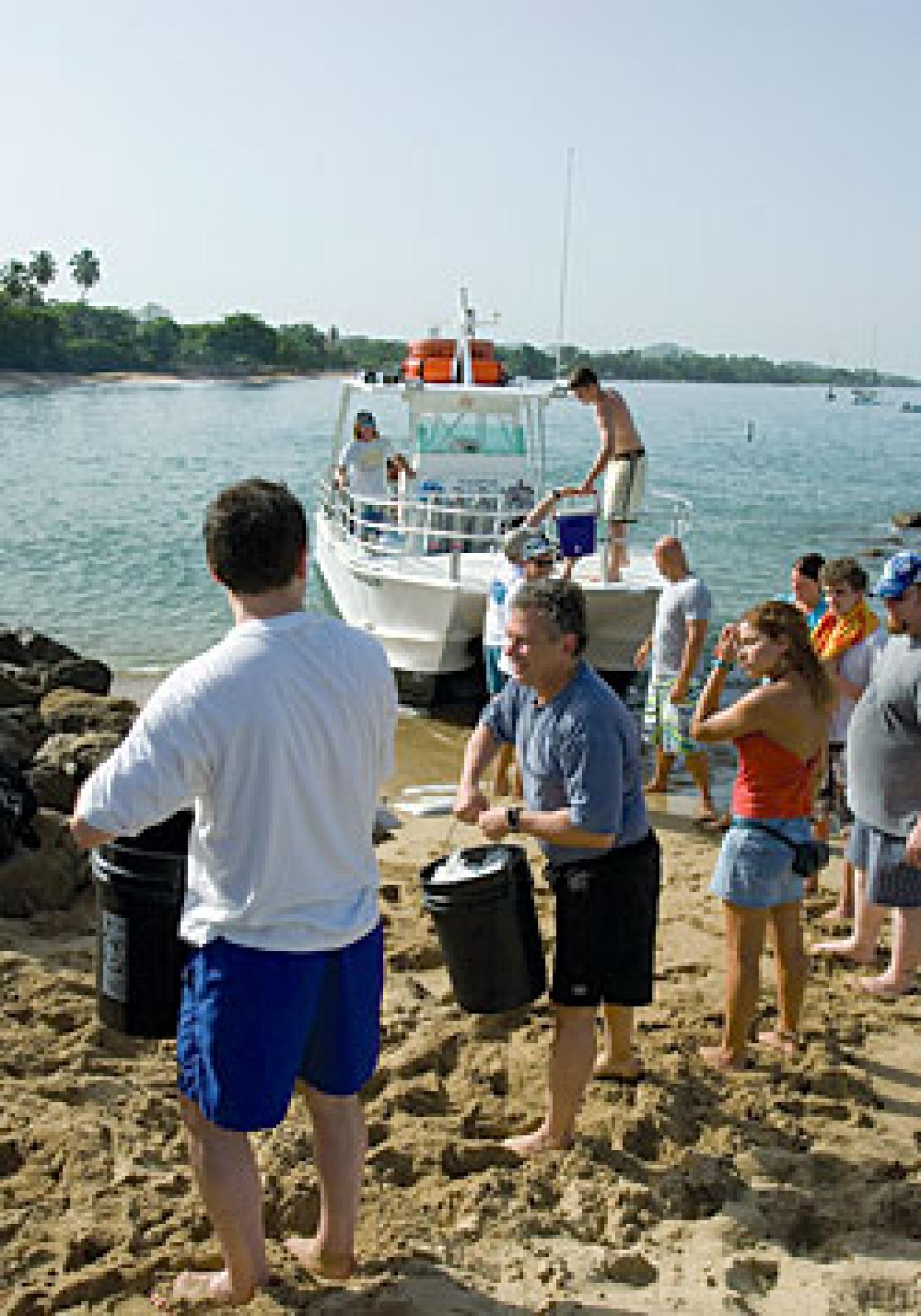
Steve Simonsen
Rincon: Coconut Can Openers
On our last day in Puerto Rico, we meet up with Carson and the staff off Taino Divers at Villa Cofresi, a hotel and beachfront bar in Rincon named for the first pirate to land here ages ago. We arrive to find Carson holding court while a light breeze rolls off the beach behind us.
"It's time," he says. That can only mean one thing. We're about to make the acquaintance of the most famous drink this side of the Bacardi factory: The Pirata. It's made with coconut milk, a bit of cinnamon and three different types of rum, and served in a freshly cracked-open coconut. The Pirata goes down like a milkshake and is affectionately known as the "can opener."
Two Pirates deep and we're all, shall we say, in a reflective mood. Carson is explaining how — completely by accident — he found his place in life sharing Puerto Rico's wild west with divers. "I showed up with a backpack, my surfboard and a guitar slung over my shoulder, thinking I'd be here for a month," he says. "That was 15 years ago."
"I'm a firm believer that you have to be passionate about what you do," he continues between sips. "I have a complete and unadulterated addiction to the ocean. It's what drives me."
He sits back in his bar stool, soaking in the warm Atlantic breeze that floats over the din of customers at the bar. He pauses, then looks up and cracks a wide smile.
"The coconuts help, too."
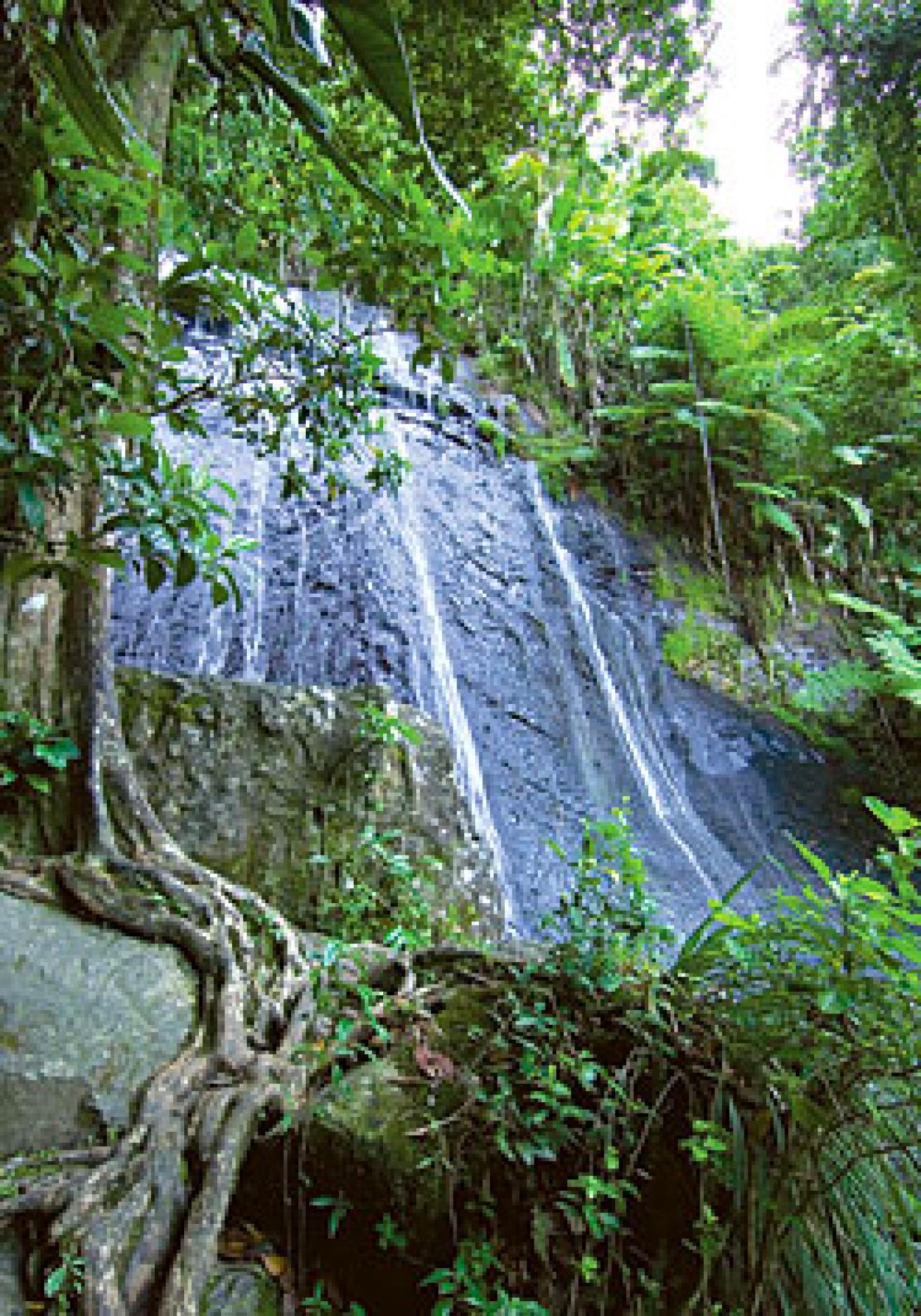
Steve Simonsen
Mona Island
Located about 45 miles west of Mayaguez, Mona Island is a rare treat for divers. This limestone plateau situated in the deep Mona Passage between Puerto Rico and the Dominican Republic has been called "the Galapagos of the Atlantic" both for its remote location and abundant marine life, but getting here remains a challenge. Permits are required and fuel costs deter most dive operators from making regular charters. That off-limits status only adds to Mona's mystique. So do barely explored dives like Carabinero Wall, a sheer vertical plunge that starts in 20 feet of water and just keeps going to 500, and the stack of massive encrusted boulders known as Cathedral. Mona sites are deep and currents can be unpredictable this far out to sea, making the island best suited to advanced divers.
More Topside Adventures
Puerto Rico is blessed with both great diving and an abundance of attractions above water that should not be missed. Here are a few of our recommendations, but for more options, visit Puerto Rico — The All-Star Island.
Old San Juan. The "walled city" is a study in contrasts — it's steeped in colonial history and island culture and home to some of the hottest anything-goes nightlife on the island. A walking tour is a must, and you can feel the past coming to life as you stroll through the narrow, cobblestone streets that date back to the founding of the city in 1521. Admire the carefully restored colorful Spanish colonial buildings and stop for a rest in numerous parks, plazas and museums. The marquee attraction, however, is El Morro, a massive colonial-era fortress rising 140 feet above the sea. It's now a National Historic Site and open to the public daily from 9 a.m. to 5 p.m.
Bacardi Distillery Tour. The world's largest rum distillery — it can knock out 100,000 gallons per day — is located on the outskirts of San Juan. To see how they do it, take the free, 45-minute tour of the facility. Stops include a multi-media station where you can send video greetings via e-mail to your friends back home, and a well-stocked art deco bar where the mixologist shares recipes and stories behind some of the Caribbean's most famous cocktails. For more information, visit Bacardi Distillery.
El Yunque Caribbean National Forest. Open to visitors daily from 7:30 a.m. to 6 p.m. El Yunque is the sole tropical rain forest in the U.S. National Forest System. Its 28,000 acres experience a year-round tropical climate and display incredible biodiversity. Bring a camera to capture images of beautiful waterfalls, which can be reached on either hiking or driving tours. For more information, visit the El Yunque site.
InDepth
Dive Conditions: Average water temps are 85 in the summer and 75 in the winter. Expect 60 to 80 feet of visibility around the main island, and upwards of 100 feet around Mona and Desecheo.
Weather: The average temp in summer is 85; in winter, 83.
Travel Savvy: Since Puerto Rico is a U.S. territory, no passport is required for U.S. citizens. Nonstop flights to San Juan (SJU) originate in many U.S. gateways. From San Juan, it's about a 2- to 3-hour drive via highways to the southwest or west coasts of the island. Direct flights are also available to Aguadilla's Rafael Hernandez Airport (BQN) near Rincon. Departure tax is included in airline ticket.
Destination Link: Visit See Puerto Rico — The All-Star Island.
For More Info: For detailed information on Puerto Rico dive operators, comprehensive travel guides, special dive deals and recent trip reports submitted by users, go to our web site at www.scubadiving.com/travel/caribbeanatlantic/puerto_rico.

